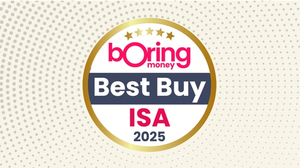Platform fees do matter – Here’s why
18 Feb, 2022
Sponsored by Wombat
Does the price you pay to manage your investments really matter?
Finding out how much each platform charges can be a drag. And they tend to be small numbers – something like 0.2-0.4%.
That doesn’t sound like much, and many people find it’s too much of a headache to research cost-effective options.
It is especially tricky because providers often structure their charges differently. Some have a fixed fee, others calculate charges as a % of assets. Some charge per trade, while others are free.
It is worth doing your research
To help illustrate some examples, we’ve teamed up with Wombat to look at some examples.
Wombat is a relatively new provider, focused on thematic investment funds and shares. They charge £1 per month + 0.1% of the value of your investments.
Here’s how it compares to some of the big, established platforms, and a similar provider, Plum. To calculate these examples we've assumed a regular monthly investment of £100/£200 and factored in some investment growth to illustrate how much it would cost you over different time periods in fees paid to the provider. These figures just reflect the platform admin fees, not the cost of the funds you buy within your account.
Charges based on a £100 regular monthly investment
Charges based on a £200 regular monthly investment
These are just a couple of scenarios. They illustrate the total cost paid over 3, 5, and 10 years – these are the sorts of timeframes you might be thinking about as a long term investor.
What does it show us?
Firstly, over time lower percentage fees do add up. Hargreaves, with tiered charges from 0.45-0.10% is relatively expensive for someone building up their portfolio from scratch. Although it does offer a wide range of functionality, research and literature for the price tag.
With a lower rate starting at 0.25%, AJ Bell is considerably cheaper. While our Wombat example is cost effective in most scenarios.
Secondly, some providers are more cost effective than others for those starting out. The examples above look at someone starting from scratch with a monthly direct debit to build up their portfolio over time.
What about if you’re transferring a large lump-sum balance?
The figures can look quite different if you're investing a lump sum. Sometimes a fixed-fee provider like ii starts to look much more attractive, especially if you want to leave your portfolio and don’t need to trade regularly. We've added them in to this examples, illustrating the cost of investing a £100,000 lump sum deposit.
Interactive Investor (ii) charges £9.99 per month at a flat rate. For a larger balance, this can be favourable compared to percentage charges, as you can see from the chart here.
Charges based on a £100,000 initial deposit with no additional payments
What is right for you?
Understanding what your needs are is the first step. If you’re starting out with small, regular investments you’ll probably want to find something with a low % fee and/or fixed charge and little or no trading costs – otherwise the cost of dealing every month will eat away at your portfolio.
If you’re an established investor consolidating multiple accounts, you may benefit from a fixed charge, or be willing to pay a premium for the fund and share research you get with some providers.
And for those that want to trade frequently, think about whether that’s shares or funds and look at the costs of dealing in both to find something cost effective for you.







